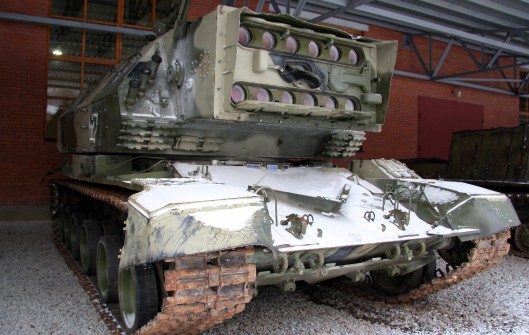Royal Navy deployed laser weapons during the Falklands War
By David Szondy
August 9, 2013
Despite recent demonstrations by the US Navy, we still think of laser weapons as being things of the future. However, previously-classified British documents prove that not only were the major powers working on laser weapons in the 1970s and 80s, but that they were already being deployed with combat units in war zones. A letter from the Ministry of Defence released under the 30-year rule reveals that laser weapons were deployed on Royal Navy ships during the Falklands War in 1982, and that the British government was concerned about similar weapons being developed behind the Iron Curtain.
Even though the first lasers were invented in the 1960s and quickly showed their ability to generate power densities capable of burning through steel razor blades, we tend to regard any use of them in the field of weapons as a 21st century development. In the public imagination, laser weapons in the last decade of the Cold War latches on to the American Strategic Defense Initiative (aka Star Wars). It stirs up visions of things like orbiting laser weapons stamped ďMade in USAĒ powered by exploding H-bombs designed to counter a Soviet nuclear attack, but which would forever remain inhabitants of the drawing board.
The truth is that not only was there more to the story of laser weaponry, but that they were already part of the armory of some of the major powers. Declassified documents show that the April 2 invasion of Port Stanley, which triggered the Falklands War, came close to seeing them used in combat for the first time.
Artist's concept of a US orbital laser (Image: US Air Force)
The Falklands War is already historic in many ways. It was the only major naval engagement since the Second World War, the first modern missile war, the point where Britain threw off the paralysis caused by the Suez Crisis, and one of the most remarkable deployments since WWII as the Royal Navy managed to mount a task force and retake the Falkland Islands in two months, one week, and five days.
Those of us who were alive then recall a persistent rumor, even an open secret in defense circles, of laser weapons being used by the Royal Navy during hostilities. The loss of several Argentine fighters was attributed to lasers designed to dazzle pilots, and one instance was put forward where the pilot saw a glaring light before going down.
Recently-declassified documents confirm at least part of the story. A letter from then Defence Secretary Michael Heseltine, dated 17 January 1983, states that a medium-power laser weapon was deployed with the task force.
The letter states, "You may recall, however, that we developed and deployed with great urgency a naval laser weapon, designed to dazzle low flying Argentine pilots attacking ships, to the Task Force in the South Atlantic. This weapon was not used in action and knowledge of it has been kept to a very restricted circle."
The Soviet 1K17 Szhatie laser tank (Image: Vitaly V. Kuzmin/Wikipedia)
The letter is also a fascinating capsule history of laser weapons development up to that time. According to Heseltine, Britain had been looking into laser weapons since the laser's invention in the early 1960s, but interest really peaked after a major US breakthrough in 1972. This isn't spelled out, but itís most likely the development of high-energy gas dynamic lasers, which had the potential of generating enough power to take out aircraft and missiles. Heseltine pointed out that Britain and America were constantly exchanging information on the topic, and in 1974 a British program was set up to assess laser damage and propagation effects.
The outcome of these studies in 1979 was that Britainís interests were better served by medium-range lasers against soft targets, such as eyes, optics and electro-optic sensors. Furthermore, the letter points out that by the mid-1980s the Soviets could be fielding similar laser weapons, may have already installed one on the Cruiser Kirov, and that such weapons could give the Warsaw Pact an advantage if used in an armored attack on NATO forces.
This wasn't far off the mark. The Soviets were developing such laser weapons and even built the experimental 1K17 Szhatie, which mounted a battery of ruby lasers on a tank chassis to knock out NATO sensors, though it proved too expensive to produce. With the Soviet threat in mind, Britain concentrated on medium-powered lasers and countermeasures against them. However, since lasers donít work very well in poor weather, they were not regarded as a substitute for conventional weapons.
There aren't many details on the laser deployed during the Falklands War, but itís likely to be the Laser Dazzle System (LDS), specifically designed for use against aircraft sensors and pilots. According to defense expert Norman Friedman writing in The Naval Institute Guide to World Naval Weapons Systems, 1997-1998, this was very likely a manual device relying on binoculars for aiming, though by the 1990s there were reports of ones on fixed motorized mounts and operating in the near-IR wavelengths to counter lens coatings and anti-laser goggles. Exactly which ships carried the lasers isn't certain, but they may have been on frigates, amphibious assault ships, or the two aircraft carriers in the task force.
Source; The National Archives (PDF) via BBC
Copyright © gizmag 2003 - 2013 To subscribe or visit go to: http://www.gizmag.com


